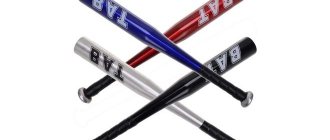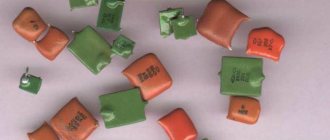Properties of foamiran
Plastic suede is a material that is surprisingly comfortable to work with. You will be able to create an original thing, even if you have never done anything like it.
The main advantages of foamiran
- Plastic. The material stretches well and restores its shape. However, if you overdo it, the sheet may tear.
- When heated, it can be given any fixed shape and position. It is enough to hold the product next to a heated iron. Be careful: if the foamiran is overheated, it will shrink.
- The sheet is easily cut with ordinary scissors, a figured hole punch or a breadboard knife. The edges are clear, have no sharp edges, and do not crumble, so you can cut out small details of any complexity from it and even entrust it to a child.
- The material is highly moisture resistant. If necessary, wash the product with plain water. The item will not get wet, will dry quickly, and mold and mildew will not grow inside.
- Foamiran is friendly with any dyes, since its structure is porous and perfectly absorbs dyes. For example, it can be given the desired color using watercolors, gouache, oil, acrylic, pastel pencils and even decorative cosmetics. In order for the paint layer to adhere well, acrylic varnish must be applied on top.
How to make realistic ripened cotton sprigs for interior decoration
What is cotton: everything about cotton fiber
A rustic accent in the interior - be it a dry bouquet in a tall vase, fresh cut flowers in a teapot or creamer, a composition of fruits and vegetables in a basket - immediately brings to the house an atmosphere of warmth, naturalness, lightness and comfort. Today we will make amazingly naturalistic branches of ripened cotton, which, moreover, will require almost no financial investment.
1. Using scissors, cut out individual “cups” for eggs from the bottom of the egg packaging.
2. On the side of the “petals” around the entire circle of each cup, cut off a little more cardboard so that the petals become longer and appear separate. Once dyed, this will be the base for the cotton balls.
If you want to better adjust the shape of the petals, this step can be done after coloring. In addition, the paint will make the cardboard softer, and it will be easier to cut it exactly the way you need.
3. Using brown paint (you can dilute and adjust its shade to a more natural, natural one by mixing several brown tones, thereby increasing the depth and saturation of the color), we completely paint each cut cup outside and inside. A couple of layers as needed. Here it is done with watercolor in 1 layer.
4. When each cup is still wet, we bend all its petals towards the center from above and in this form we place it, for example, on wax paper or newspapers (make sure that the newspapers do not leave marks on your work) until completely dry.
5. To make each calyx more similar to its plant counterpart, cut small, uneven pieces from the sides of the petals, as shown in the photo below.
6. To make the cotton ball look like raw cotton from a bush, carefully pull it apart a little with your fingers in different directions. One cardboard cup will contain 1.5-2 balls prepared in this way. Alternate the amount/volume of cotton wool in each cup so that the bouquet of ripened cotton branches later looks more natural.
7. Using hot glue (or an analogue), fix the cotton balls in the cardboard cups in the center. Let the glue dry.
8. Now, bending the larger petals, we place them on the “cotton” towards the center of the cup, and bend the small cut cardboard fragments back towards the bottom of each cup.
9. On the bottom of the cardboard cup - or you can (better) make small holes in the bottom center and drip glue inside - apply glue and fix the cups with “cotton” at the ends of the branches. We hold each cup on the branch with our hands until the glue dries. Alternate the number of cups on the branches to make it look more natural.
Ripe cotton sprigs bring country chic and rustic charm to your kitchen, living room or porch. We collect all the ready-made branches and place them in a bouquet in a tall vase. You can also weave a wreath from similar cotton branches, make a panel for a harvest festival, etc. - whatever your imagination suggests.
Using the same method, but using different paint and smaller parts from egg packaging (as well as balls of yellow paper), you can make branches with flowers: sakura, blooming apple tree, etc.
Source
Is this material safe?
High-quality foamiran from well-known brands is completely harmless for children and adults. It does not contain toxic substances and does not emit unpleasant odors or toxic fumes when heated.
The very fact that toys and construction sets for children are produced from foamiran on an industrial scale suggests that the material is absolutely non-toxic.
What bothers some people is that there is a slight odor when opening the package. However, there is no need to be afraid. It is quite natural that when stored in cellophane packaging for a long time, the material “stales.” Within half an hour the smell completely disappears.
Master class 2. Artificial flowers made of satin fabric or organza
Looking at these flowers made of satin fabric, it seems that they were created by a real master of flower making, but in fact, even a beginner can make the same realistic peonies/roses.
You will need:
- Candle;
- Satin, silk, chiffon or organza made from 100% polyester. For making peonies, white and pink fabric (all shades) is suitable;
- Scissors;
- Yellow floss threads (for stamens);
- Needle.
Instructions:
Step 1. Cut out 5 circles from fabric: 4 circles with a diameter of 8-10 cm and 1 circle with a diameter of approximately 5-8 cm. You can cut roughly and by eye, any inaccuracies and unevenness do not matter.
Step 2
Light a candle and start processing the first round workpiece: carefully bring its edge close to the flame and begin to rotate around its axis so that all the edges of the circle are melted and curled. Be careful, have a glass of water ready, and most importantly, do not bring the workpiece too close to the fire
Keep in mind that if you overdo it, the edges will turn black, which is not always desirable. However, sometimes it is the blackened edges that give homemade flowers realism or originality. Repeat this process with all remaining circles.
Step 3. Now, using scissors, make 4 cuts on each workpiece as shown in the diagram and photo below. The main thing here is to leave the center of the circle intact.
Step 4. Back to working with the candle again. This time we melt the newly obtained sections, pushing the sections apart with both hands. Repeat the procedure with all five petals.
Step 5. Set 2 large and 1 smallest pieces aside. We will return to them later, but for now let's work on the 2 remaining blanks, that is, the middle layers of peony petals. They need to be cut again according to the following pattern.
As a result, you will get twice as many petals.
Step 6. Use a candle to burn the new cut areas and set the pieces aside.
Step 7. It's time to make the peony stamens in the form of a small pompom from yellow floss threads. For this:
- Wind a whole strand of floss tightly around your index and middle fingers together. You should get about 8 turns.
- Now tie the middle of the resulting skein tightly (between two fingers) with the same yellow thread.
- Cut two loops, straighten the threads and trim the pompom if necessary.
Step 8. We begin to “assemble” the flower. Stack two large blanks on top of each other, which have only 4 petals, then put two blanks with 8 petals on them and, finally, complete the bud with the smallest blank with 4 petals.
Step 9. Hurray, the flower is almost ready! All that remains is to sew a yellow pompom to its center, simultaneously sewing all 5 layers of petals together.
If desired, glue/sew the necessary accessories, such as a pin, to the back of the bud to make a brooch out of the flower.
By changing the shape, color, size of the petals, their number and gluing principle, you can make not only peonies and roses, but also poppies (pictured), ranunculus, lilies and tulips.
Fabric poppy
And here is an example of flowers made from organza.
Organza flowers
What tools and materials are needed?
When working with foamiran you will need the following:
- sharp scissors or a breadboard knife;
- figured hole punch or scissors;
- toothpicks, a simple pencil for drawing contours;
- brushes and pieces of foam rubber for painting foamiran;
- any paints - oil, watercolor, pastel, acrylic, decorative cosmetics;
- wire for the frame - if you are creating something complex and voluminous, for example, a large flower;
- tape - for stems in flower arrangements;
- molds for creating complex shapes.
It is best to glue foamiran parts using a glue gun or any rubber glue. PVA glue, glue stick, Moment are not suitable.
DIY cotton bolls (master class)
Next, we thread the brown thread into the needle and tie the tip into a knot. Turn the ball over to the bottom side and insert the needle approximately in the center of the ball. Pull the thread to the end, turn the ball over and insert the needle again from below. This creates a loop on the side that needs to be pulled tight. Next, we pierce the ball again from the bottom up and tighten the loop on the opposite side.
At the next stage we form the slices. We also pierce the ball, pull out the thread, and tighten the loop well. My cotton ended up having six pieces.
After all the slices are formed, turn the “cotton” over - stitch the thread from the bottom and cut it off.
Then draw petals on craft paper with a pencil. We cut out this blank, apply glue in the center and glue in a cotton flower.
The petals need to be folded in the center according to the pointed tip. If desired, each petal can be glued to the side of the “cotton”. I prefer the effect of a fully opened box, so I leave the product as is.
As you can see, you can very easily make a cotton flower with your own hands, spending literally 10 minutes on this matter. Ready-made cotton boxes can be glued to dry twigs collected in the park and placed in a vase, or you can wrap them in craft paper and present them to someone close to you as a gift bouquet. This bouquet will look especially relevant in the autumn-winter period. Visit my channel, you can find a lot of interesting things there (the link to the channel is at the beginning of this article). Happy creativity, see you again!
Tulips
You will need: foamiran in bright colors, green foamiran, floral wire, dry pastel, wet wipes, tape, floral buds, glue, scissors, ruler, iron, cardboard, toothpick.
Master Class
- Draw a tulip petal 6 cm high and 3.5 cm wide in the center on the cardboard, then cut out the template.
- Draw a tulip leaf 25 cm long on cardboard and 3.5 cm wide in the center, then cut out the template.
- Trace the petal template onto foamiran with a toothpick and cut out 6 petals.
- Trace the leaf template onto green foam paper with a toothpick and cut it out.
- Tint the petals and leaves of the future tulip using a damp cloth and dry pastel.
- Heat each petal by applying it to the iron, then give them a realistic shape by stretching them in width and length.
- Heat the tulip leaf and fold it in half lengthwise.
- Glue 3 petals to the flower bud, completely covering it.
- Glue the remaining 3 petals, placing them in a checkerboard pattern.
- Glue a piece of floral wire into the leaf.
- Wrap the stem with tape and attach the leaf.
- Make a whole bouquet of tulips in the same way.
Foamiran tulips are ready!










